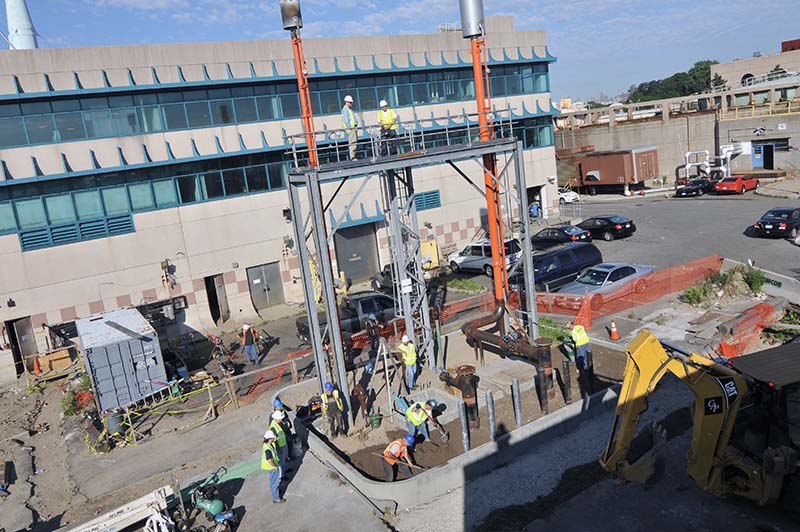
 Department of Citywide Administrative Services311
Department of Citywide Administrative Services311 Search all NYC.gov websites
Search all NYC.gov websites
Non-Competitive Funding Programs

Program Overview
In addition to the competitive funding that we provide to City agencies to implement energy efficiency projects, DCAS manages a comprehensive program to install energy-efficient equipment and systems across the City's portfolio. In this effort, we work closely with the City's Department of Design and Construction (DDC), agencies that operate buildings where projects are being installed, and other partners, such as the New York Power Authority (NYPA). DCAS is also creating an additional queue of retrofit work through our new Deep Energy Retrofit Program to meet the City's mandate to do more, more quickly, under Executive Order 26. Through the Deep Energy Retrofit Program, DCAS seeks to implement energy conservation measures that have well-established efficiency paybacks, as well as those that are foundational to achieving major efficiency gains, such as building envelope work.
Outcomes
From Fiscal Year 2014 to 2018, DCAS completed ten retrofit projects in partnership with DDC, representing a total DCAS investment of $14M. These completed projects are expected to create 1,500 MT of emissions reductions. That is the equivalent of taking 320 vehicles off the road, with $745,000 in annual energy savings, and an expected average payback of 18.8 years.
From Fiscal Year 2014 to 2018, DCAS has completed 38 NYPA Retrofit projects, which are projected to create 44,300 MT of emissions reductions. That’s the equivalent of taking almost 9,400 vehicles off the road.
How to Participate
DCAS works closely with DDC and our agency partners to identify opportunities to integrate energy efficiency improvements into their planned capital projects. DCAS seeks to prioritize retrofits for the worst-performing, most carbon-intensive buildings. For more information, contact DCAS.
Case Studies
- Energy Upgrade – NYC Department of Corrections (DOC) Rikers Island Laundry Facility
- Lighting Upgrade – NYC Department Transportation (DOT) Staten Island Ferry Maintenance Facility
- Solar Thermal – Fire Department of New York (FDNY)
- Lighting Upgrade – Department of Sanitation (DSNY) Staten Island Sanitation Garages 1 & 2
- Energy Audits – Brooklyn Public Library (BPL) Central Library
- Ice Storage – New York Police Department (NYPD) Facility


